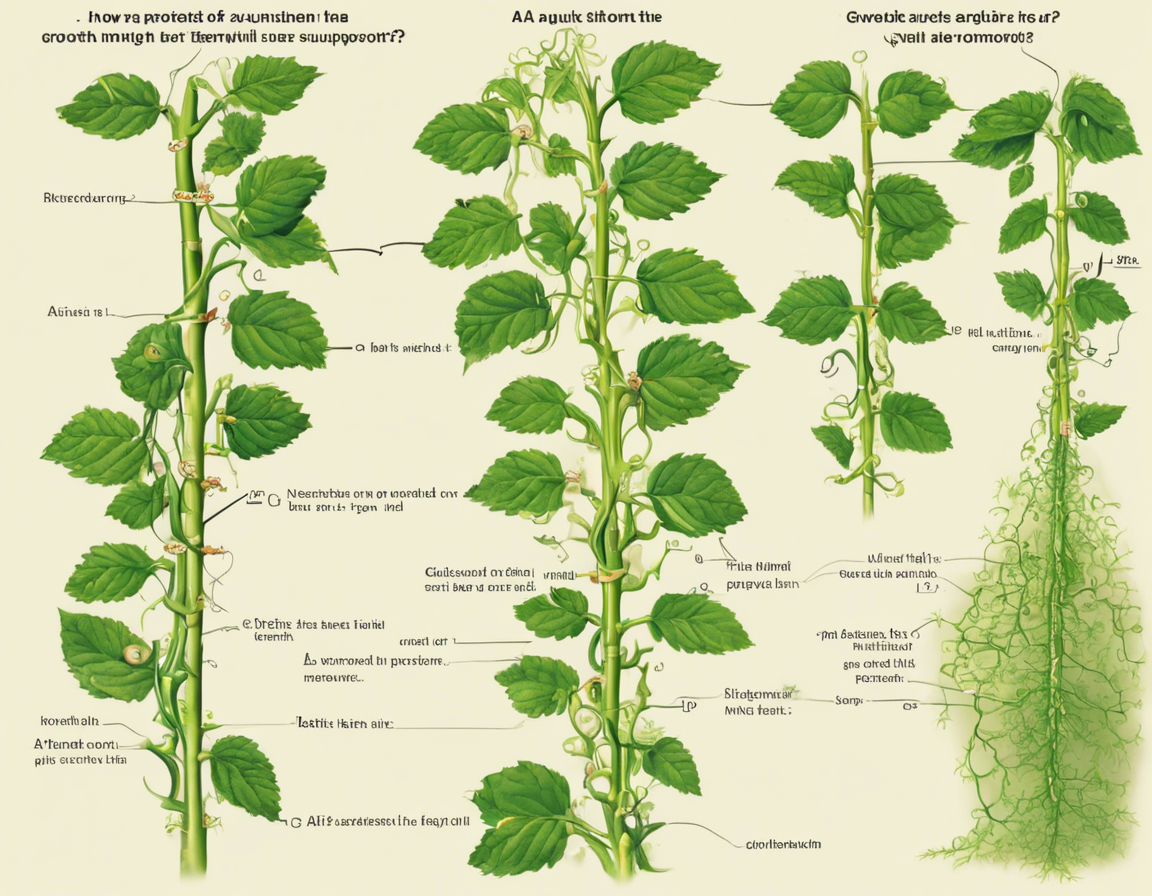Introduction
Auxins are a class of plant hormones that play a crucial role in various aspects of plant growth and development. Tendrils are specialized structures in plants that aid in climbing and provide support. The growth and development of tendrils are mediated by a multitude of factors, with auxins being one of the key players. In this article, we will explore the intricate relationship between auxins and tendril growth, shedding light on the underlying mechanisms and processes involved.
Understanding Auxins
Auxins are plant hormones that regulate various aspects of plant growth, including cell elongation, cell division, apical dominance, and tropic responses. The most common naturally occurring auxin in plants is indole-3-acetic acid (IAA). Auxins are primarily synthesized in the apical meristems of plants and are transported downwards through the plant via polar auxin transport. This movement of auxins plays a crucial role in coordinating various growth processes in plants.
Auxins and Tendril Growth
Tendrils are specialized structures in plants that exhibit thigmotropism, the growth response to physical touch. Tendrils coil around support structures such as trellises or other plants, enabling the plant to climb and access sunlight. The growth of tendrils is a complex process that is regulated by multiple factors, with auxins being one of the key regulators.
Role of Auxins in Tendril Coiling
Auxins play a critical role in promoting tendril coiling in response to touch. When a tendril comes into contact with a support structure, such as a trellis, it triggers a series of events that lead to the differential distribution of auxins in the tendril. This differential distribution of auxins results in the asymmetrical growth of cells in the tendril, causing it to coil around the support structure.
Polar Auxin Transport in Tendrils
The process of polar auxin transport also plays a crucial role in tendril growth. As auxins are transported downwards through the plant, they accumulate on the side of the tendril that is in contact with the support structure. This accumulation of auxins leads to asymmetrical cell growth and ultimately causes the tendril to coil around the support structure.
Interaction with Other Hormones
The growth and development of tendrils are not solely regulated by auxins. Other plant hormones, such as ethylene and gibberellins, also play a role in coordinating tendril growth. The interaction between auxins and these other hormones is complex and highly regulated, ensuring the proper growth and development of tendrils in response to various environmental cues.
Regulation of Gene Expression
Auxins regulate the expression of numerous genes involved in tendril growth and development. By modulating the expression of these genes, auxins fine-tune the growth processes in tendrils, ensuring proper coiling and support for the plant. The intricate network of gene expression regulated by auxins highlights their importance in tendril growth.
Conclusion
In conclusion, auxins play a central role in regulating tendril growth in plants. By influencing cell elongation, polar auxin transport, gene expression, and interactions with other plant hormones, auxins coordinate the intricate growth processes that lead to tendril coiling and support. Understanding the role of auxins in tendril growth provides valuable insights into the mechanisms underlying plant development and adaptation to the environment.
Frequently Asked Questions (FAQs)
1. What is the relationship between auxins and tendril growth?
Auxins play a crucial role in regulating tendril growth by promoting cell elongation, polar auxin transport, and gene expression that lead to tendril coiling in response to touch.
2. How do auxins contribute to tendril coiling?
Auxins promote tendril coiling by inducing asymmetrical cell growth in the tendril, leading to its coiling around support structures such as trellises.
3. Are auxins the only hormones involved in tendril growth?
No, other plant hormones such as ethylene and gibberellins also play a role in regulating tendril growth and development, interacting with auxins to coordinate growth processes.
4. How do auxins affect gene expression in tendrils?
Auxins regulate the expression of genes involved in tendril growth, fine-tuning the growth processes to ensure proper coiling and support for the plant.
5. Can external factors influence the role of auxins in tendril growth?
Yes, external factors such as light, temperature, and moisture can influence the synthesis, transport, and response to auxins, ultimately impacting tendril growth and development.

